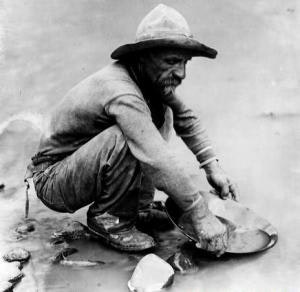River of Skulls

The Rio de las Calaveras (“River of Skulls”) was named by members of the 1806 Moraga expedition who are said to have seen skulls of Native Americans along its banks. After the discovery of gold on the American River in January of 1848, strikes were made in Calaveras County along the banks of Carson’s and Angels Creeks, and the Mokelumne, Calaveras, and Stanislaus rivers. Mining accounts for the locations and names of most of the county’s towns and communities, the larger settlements located where major strikes occurred, or where supply camps provided necessities for the surrounding encampments.
The mining industry led to the formation of Calaveras County in 1850, and it was the main pillar of the local economy for nearly 75 years thereafter. Settlers soon turned to agriculture as a more sustaining endeavor, and the cattle and lumber provided additional employment for the county’s population.
